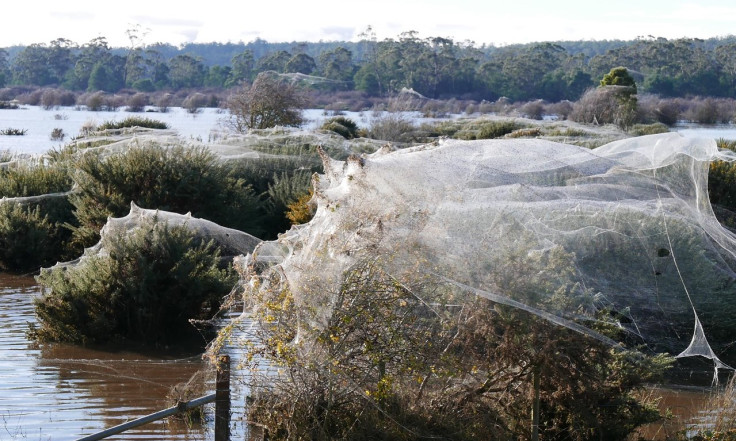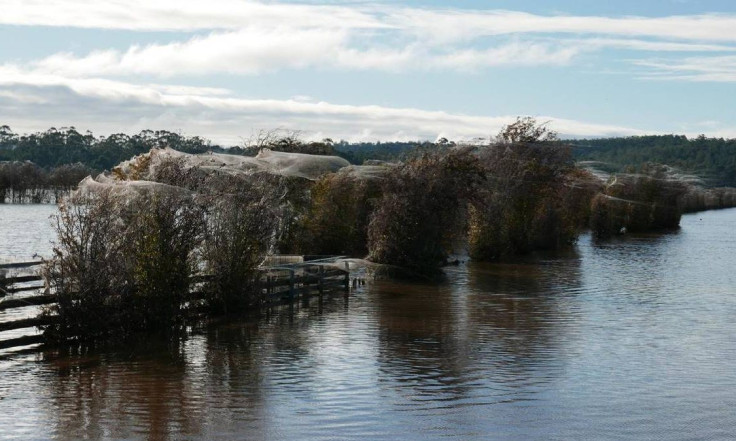Spider plague: Thousands of tiny spiders blanket trees in webs after Tasmania floods
Trees in a town in Tasmania have been blanketed in spider webs created by tiny arachnids looking to escape the floods on the Australian island. Westbury resident Ken Puccetti said it was like a "plague" of spiders had emerged, and that the webs had covered an area of around 800m.
Over recent days, Tasmania has been hit with some of its worst flooding in 40 years. A low pressure system caused torrential rain and high winds, resulting in flash floods.
To escape the deluge, the spiders took to the trees via a natural escape mechanism known as a mass ballooning event. Spiders shoot their webs into the air which are then caught in the wind, lifting them into the air and depositing them on higher ground – in this case trees. When tens of thousands of spiders do this at the same time, whole areas of land become covered in webbing.
Graham Milledge, collection manager in arachnology at the Australian Museum, told the Sydney Morning Herald: "It's a way of dispersing – their way of flying, if you like ... Events like this show people just how many spiders there are out there.

"These mass ballooning events are often associated with particular environmental conditions, for example the flooding that's happening in Tasmania at the moment. I would imagine the spiders are just trying to get away from the water.
"What they do is they climb up to a high vantage point - up to the end of a stalk of grass for example - and then they point their abdomen to the sky and let out a silk thread. The wind captures that and acts like a parachute and carries them off."
Spiders also use this technique for migration. It is often employed by juveniles and can transport them for several kilometres.

Speaking to the Guardian Australia, Puccetti said tiny black spiders were visible on the webs: "While taking these photos, my shoes, legs and arms became covered in webs and I had to brush a number of small spiders off."
While a fairly rare event, a number of mass ballooning events have been reported in recent years. The town of Goulburn in New South Wales was covered in webs last year - residents described millions of spiders raining down from the sky. Similarly, trees in Texas became covered in 40 ft webs in August last year after conditions meant huge swathes of insects had emerged from lakes at night. To take advantage of this situation, spiders constructed colossal webs in order to catch them all.
© Copyright IBTimes 2024. All rights reserved.






